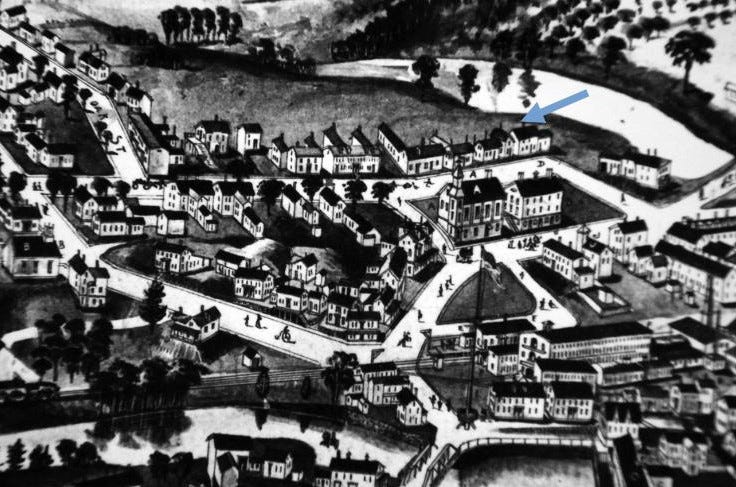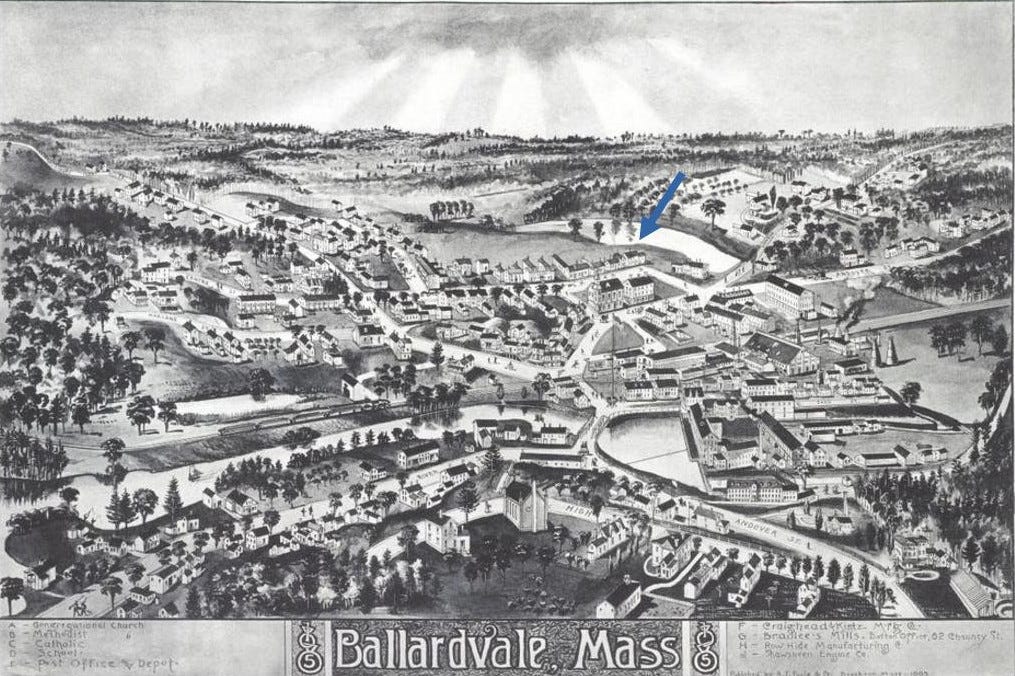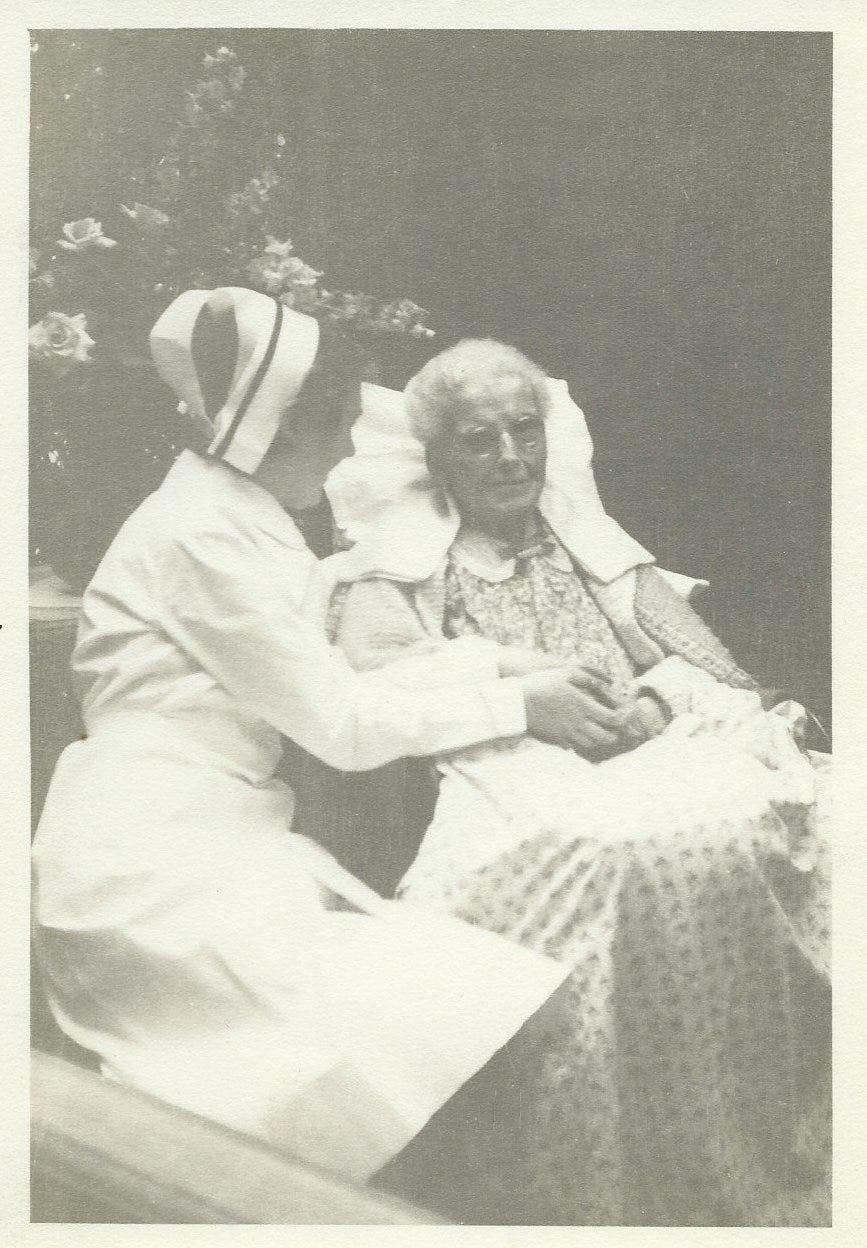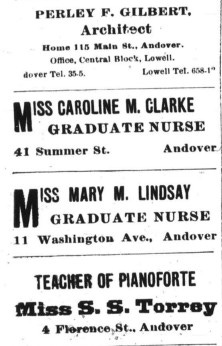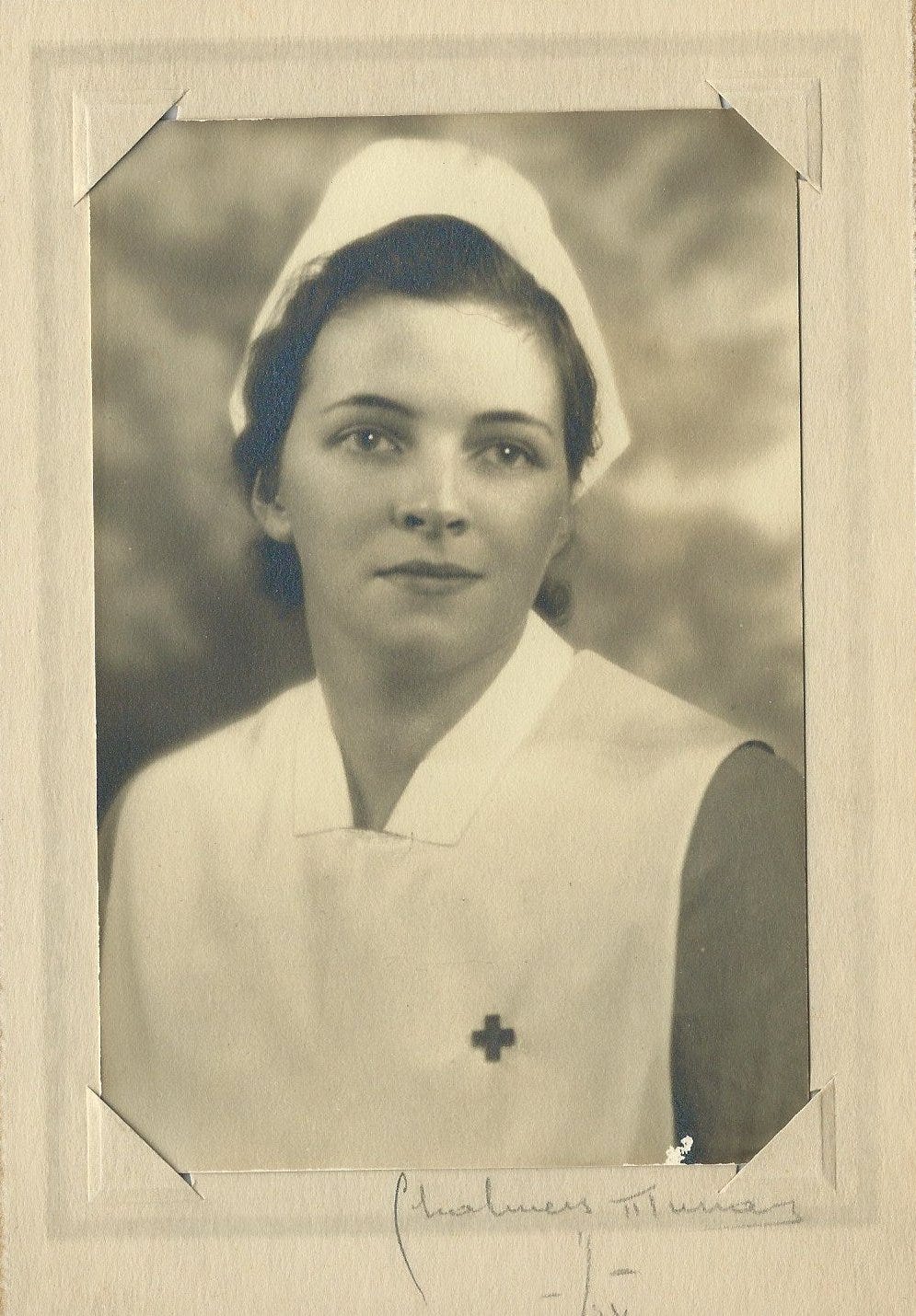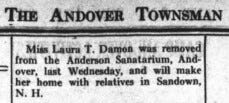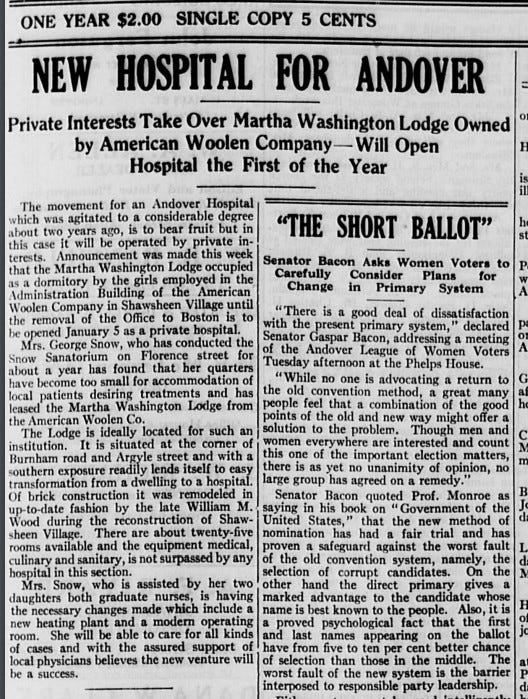Miscellany Mondays: “Miss Nellie Holmes has been removed to Miss Katherine O’Donnell’s sanitorium on Center Street”
Nursing, nursing care, and hospitals were very different in the late 1800s and early 1900s. Andover provides a snapshot of private duty nursing, general duty nursing, and hospital care of the time.
This post is an adaptation of a History Center newsletter article about Andover’s Katherine O’Donnell Sanatorium written by Tom Adams.
In his article Tom wrote,
Lifelong Ballardvale resident, local historian and longtime Andover Historical Society member Bernice Haggerty recalls the Sanatorium and especially Kate O’Donnell quite fondly. “Two of my four children were born there,” Mrs. Haggerty said. She remembers the delicate and tender care that Kate provided for all the babies - and for the mothers as well. She remembers, too, how fresh, healthy, and delicious the food was. The Sanatorium thrived for the 20+ years that Kate ran things. Her busy practice drew expectant mothers not only from Ballardvale and Andover, but also from surrounding communities.
Tom’s article led me to wonder: who was Kate O’Donnell? I’d heard about tuberculosis sanatoriums and mental health sanatoriums, but this story didn’t fit either of those categories.
Kate O’Donnell
Katherine “Kate” O’Donnell was born in 1875. Her family owned a home at 13 Center Street in Ballardvale. She attended Andover schools and for a time worked for the Tyer Rubber Company. At some point, between 1902 and 1907, Kate attended a nursing school and in the 1908 Andover street directory was listed as working as a nurse.
For the next 13 years, Kate continued to live with her family on Center Street. During this time, she likely worked as a “private duty nurse” (more on private nursing later) and cared for her mother as she aged. On June 3, 1921, just three months after her mother’s death in March 1921 at age 80, this appeared in the Andover Townsman.
In his book "Andover, As I Remember It” Jim Doherty recalled Kate O'Donnell as " a very pleasant person....who operated an obstetrics ward in her home....an important facility for the town in those days. Most children born in Andover in those days were delivered at the O'Donnell."
In his article Tom Adams wrote,
The O’Donnell Sanatorium provided a welcome facility for mothers-in-waiting and also offered a rest home for the elderly. Kate reconfigured the house to accommodate extended patient convalescence. The Sanatorium had a long hallway running the length of the building from the front to the back. There were two large ward-type rooms sitting on either side of the hallway. The room to the right was the rest home for the aged: on the left was the maternity ward...The Sanatorium closed in 1946 and Kate retired. Sadly, the Town took the property for back taxes on Dec. 28, 1956 and voted to sell of the property on April 23, 1962.
Nursing in the late 1800s and early 1900s
This fascinating local story got me wondering about nursing and local sanatoriums.1
As nursing professionalized in the 19th century until the post-World War II era, the majority of professionally trained nurses were “private duty nurses,” contracted by families, individuals, or hospitals to care for a single patient. Nurses and patients negotiated the terms of the contract — hours, wages, length of service, etc. Most private duty nurses worked 24-hours a day, most often living in the patient’s home. For many, this was an arrangement that allowed flexibility and control over the nurse’s employment. For others, the private duty nurse found themselves treated as another servant in the household.
19th century nursing training schools – some run by hospitals – were intended to train private duty nurses. After graduating, many private duty nurses advertised their services. These ads appeared in the February 1906 Andover Townsman.
The same hospitals that ran nursing schools, including the Lowell Hospital, were reluctant to hire their own nursing graduates. Nursing students were cheaper and more easily managed. They could be assigned other non-nursing roles inside the hospital. Occasionally, hospitals did hire particularly talented graduate nurses to head nurse positions to manage the student nursing staff.
Private duty nurses also worked in hospitals, hired by patients and their families to provide personal care. These nurses often lived in the patient’s room, working 24-hour shifts, as they did when hired to work in a patient’s home. This arrangement fell out of favor in the 1920s, and in-hospital private duty nurse shifts dropped to 8 or 12 hours. This also increased the price patients paid as they were now hiring multiple nurses rather than one.
In addition to advertising and managing their own work, many registered with a nursing registry which matched up nurses and patients. Registries were managed by hospitals, doctors, and by nurses’ associations.
There were advantages and disadvantages to the private duty nursing system. On the plus side, nurses were free to work when and where they liked. They could choose their patients and working arrangements. For some, it was a flexible job. For others the instability of the work was problematic and the registries controlled their work arrangements.
The nursing field changed during and after World War II. With the shortage of trained nurses during the war, private duty nursing decreased as hospital needs increased. During World War II, the “general duty” hospital nurse became the norm.
General duty nurses cared for multiple patients in hospitals and tended to work shorter shifts. The one-to-one nursing arrangement shifted to intensive care units. Today, home health care nurses still care for individual patients in-home.
In Andover, Katherine O’Donnell ran her private sanatorium from approximately 1921 to 1946, when the field of nursing changed following World War II. She wasn’t the only nurse who operated a private sanatorium in Andover. During the same time period, Florence E. Anderson ran the Anderson Sanatorium at 13 Maple Avenue, a boarding house for elderly who needed recovery nursing care.
For a short time, Mrs. George Snow ran the Snow Sanatorium on 12 Florence Street. As reported in the Andover Townsman on December 16, 1927,2 the operation outgrew the house on Florence Street after year or so. Mrs. Snow moved her business to the “Martha Washington Lodge” at the corner of Burnham Road and Argyle Street in Shawsheen Village.3 The building had for time been a dormitory for young women employed by the American Woolen Company. The company sold the building when it moved its headquarters to Boston. Before that, the building was the Andover Almshouse.4 The Snow hospital (also known as the Shawsheen Hospital) was short-lived, however, and the building was converted into apartments in 1935.
Mrs. Snow, who is assisted by her two daughters both graduate nurses, is having the necessary changes made which include a new heating plant and a modern operating room. She will be able to care for all kinds of cases and with the assured support of local physicians believes the new venture will be a success.
I hope you enjoyed today’s post. Thanks for reading!
~Elaine
UPenn Nursing School website, https://www.nursing.upenn.edu/nhhc/workforce-issues/private-duty-nursing/ is referenced throughout this post.
Andover Townsman, Memorial Hall Library website, https://mhl.org/sites/default/files/newspapers/ATM-1927-12-16.pdf
Although the Townsman reported that the Martha Washington Lodge was converted to Mrs. Snow’s hospital in 1927, the Andover Historic Preservation website reports that the building was leased to Mr. George Snow in 1931. https://preservation.mhl.org/7-argyle-street. The last newspaper listing I found for the Snow or Shawsheen Hospital was August 11, 1933. The property is listed as vacant in the street directory shortly thereafter.
From Britannica.com: Almshouse, also called poor house or county home, in the United States, a locally administered public institution for homeless, aged persons without means. Such institutions radically declined in number in the second half of the 20th century, replaced by other means of subsistence and care. https://www.britannica.com/topic/almshouse






